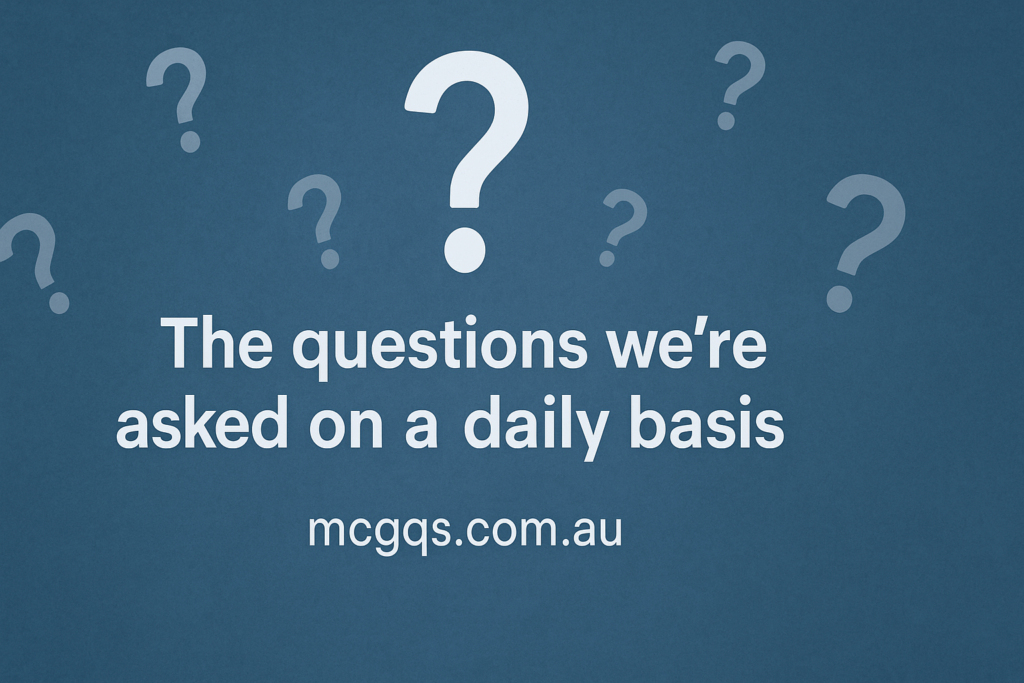The questions we’re asked on a daily basis

Navigating the world of property depreciation can be a daunting task for property investors. Our aim is to simplify the process, eliminate the B.S. and arm investors with the knowledge they need to get the most out of their property. With that in mind, we thought it would be a good time to answer some of the questions that we’re asked on a daily basis. Some of the questions arise from misleading statements in the media, others are decades old myths about depreciation. Let’s take a look at the top 2.
1. Is it worthwhile to have a report completed?
As much as this can be a difficult question to answer, there are a few key things that can answer the question in the affirmative right away. For example, was the property built after September 1987? If the answer is yes, then the report is going to be worthwhile. As a worst case scenario, let’s say the property was built in 1989 and the construction cost at the time was around $65,000 (which was about the national average at the time). Let’s say that $8,000 can be assigned to the plant and equipment items (stove, carpet, blinds, hot water system etc). That leaves us with $57,000 for the building structure itself. The depreciation rate for the building structure is 2.5%, so there will be $1,425 worth of deductions on the building structure alone, each year for 40 years. If the property is newer than that, all the better! With a marginal tax rate of 37%, that’s around $500 in your pocket each year on the building structure. Add the plant items and maybe the odd renovation/touch up, it equates to a worthwhile schedule.
By the same token, if the property was built prior to 1987 but has had renovation expenses of $50,000 or more, then it’s likely to produce the same result. Remember, you don’t have to have completed the renovations yourself, they can be claimed even when completed by the previous owner.
2. How much does the service cost and why is there such a difference in fees?
About 10 years ago, all reports were around the $600 mark. These days you’ll find quotes from $200 odd and upwards to $800 for a residential report. It’s important to note that the $200 to $500 reports are a completely different product. The bargain basement reports often exclude a site inspection, or offer it as an add-on option. In our view, any company offering an inspection as an option is not acting in the best interests of their client. There are certainly circumstances where an inspection may not be required, such as when plans, a total construction cost and a detailed schedule of finishes is supplied. However, for any pre-existing property or property with common areas, an inspection is an absolute must! Trained experts may find renovations or improvements which you wouldn’t otherwise notice and that’s on top of any compliance issues of not having someone inspect the property prior to issuing a report on the construction values. Corners can also be cut with poorly trained staff and lengthy disclaimers that state the report was issued on the basis of information provided by the owner and under the self assessment rule.
In the absence of a recommended fee from our governing body, we believe a report should be around the $650 to $700 mark. Factoring in the cost of organising and undertaking the inspection, something has to give in order for the report to be completed any cheaper than that. Our sole focus is to provide the BEST possible result for our client. You certainly shouldn’t be paying a premium for using a particular company based on flashy marketing, but and a cheap and nasty depreciation report is a little like putting 2nd hand tyres on a Ferrari.
